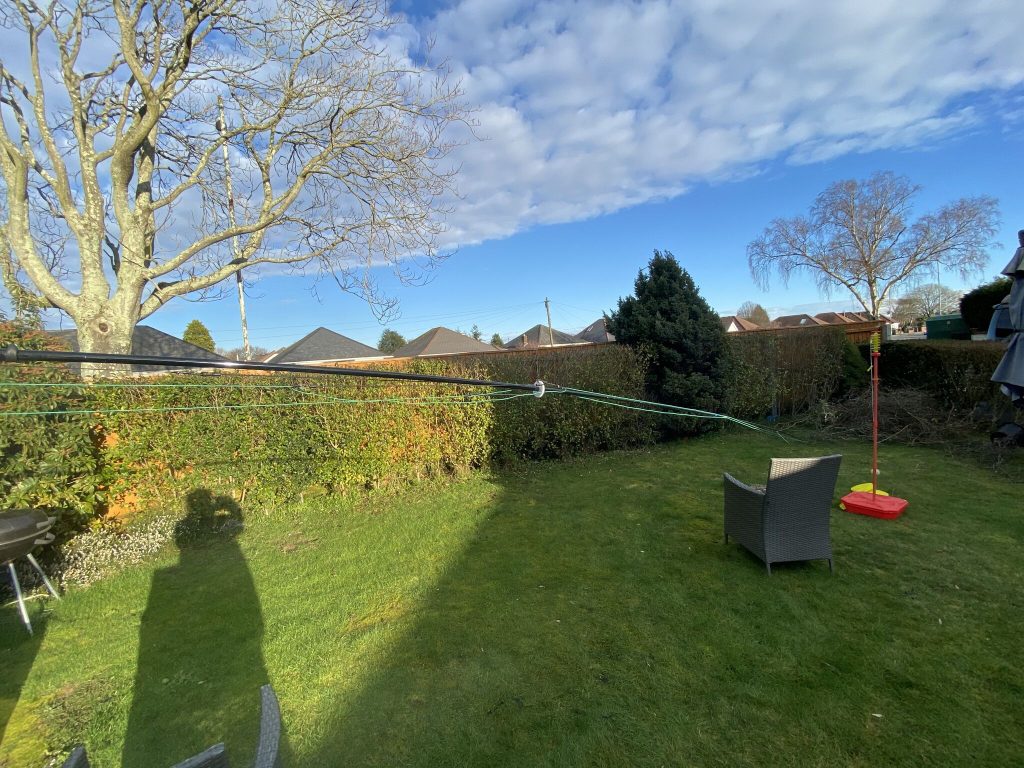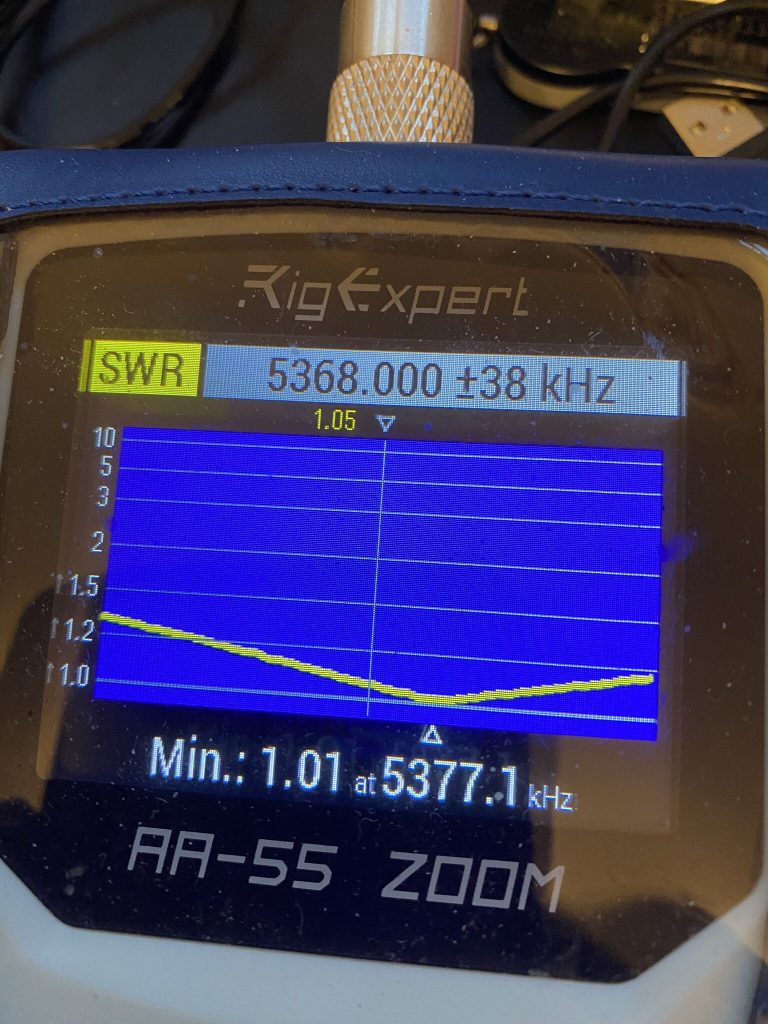The weather in the QTH has been particularly bad for the past week and the opptunity to do any amateur radio activties overtaken by university assignments. Thankfully today though, both the weather and a bit of respite in the amount of course work to do meant i could focus on the nebula.
Having operated 80, 40 and 20 the next step was to multiband the nebula. I’ve done various configs on the DX Commander Classic before (adding 80 as L, different band makeups) but this was my first time with the Nebula in moving elements and adding new ones. As ever my first port of call was the instructions to review what was ahead to get from 3 to 6 bands.

surveyor tape measure 
dx10 and spool 
nebula with 3 elements
I set out first thing in the morning, probably around 8, to start measuring the elements. The surveyor’s tape measure really is great for these long pieces of wire and getting the lengths right. My ad-hoc spool shystem formed from some mast brackets and securing pin done the job in being able to pull the wire off easily. Note the nebula still had its existing 80, 40 and 20 meter elements. These would be taken off with all the tape/elastic as well as they would need repositioning.

cut a bit longer a trim 
melting the ice 
icey mast 
it was still cold!
I set about cutting the longest element first, being for 60m. I cut longer and trim, based on experience this allows to get it close to the lengths required. As you can see the sun was coming up and thats not smoke from the fire, thats the ice evaporating ! As you can see the Nebula had a good amount of ice on it from how cold it had been overnight, and was still quite chilly in the morning !

Tinning
With the lengths of wire cut for the new elements, i returned to the ‘shack’ and stripped the wire to fit into the connectors. I stip/tin, then crimp to ensure electical connectivity and mechanical strength.

80m 
useful ladder 
good tension 

flexing the mast
I started with the 80 meter element, by far the longest, and most complex to get right. I do not like ‘floppy’ wires for elements, so I have a good amount of tension. Getting enough ‘slack’ into the top takes a bit of time and install fettling to get right, but taking time and getting the right lengths of elasticcord makes a big difference. I was able to get good tension on my 80m elements and even should the wind blow hard causing the mast to ‘flex’ it will enough ‘give’ to not snap/come off.
I repeated this for all the other elements. The process I used was to first to re-markup the vertical plate at the base of the mast, then rotate the spreaders, using the ‘dx commander; stickers as visual line up, I was able to install all elements quite easily, even 60 was ok to install despite its length. I had run out of paracord, but getting the tenion in the rope has done the trick for 17m and 20m verticals.

MutliSWR 
80m 
60m 
40m 
30m 
20m 
17m 
15m 

10m 
6m
As you can see from the Rigexpert output SWR results are satisfactory to excellent. All the bands where I have elements are tuneable on the IC-7300’s internal tuner, and in some cases not even needed. I was amazed at the results for 60m, being a ‘new’ element to me on how well the SWR was. 10 and 6m look good as well, but think with a dipole conditions would need to be very good in the ‘E-Layer’ t pick up any signals.

80m 
40m 
5Mhz band 
30m 
20m 
17m 
27Mhz 
10m 
6m 
all
The S.W.R. reports for each frequncy mid-band demonstrated the effectiveness of the Nebula. As a Intermediate licence holder, i cannot transmit on 5Mhz, but I will tune in and listen for sure ! I think the SWR’s for all the bands is quite acceptable.

dummy load
When I’m not using my radio, or my antenna is down, i put this dummy load on. Whilst not rated for 100W, its better than not having anything on there. I’ve never tried to transmit without an antenna in place, but this strikes me as a good idea to ensure the longevity of the rig..

nebula in full effect 
multiband ahoy 
one happy 2E0FWE 
awesome nebula 
happy end to the day
By now i had taken our dog Sweety for a walk, as well a few bits and bobs around the house. I do enjoy taking a break and having a cup of tea with me missus, it keeps things at a sane pace.
I knew at around mid-aftenoon it would be slightly close to get the antenna fully vertical and all the radials reattached before night came along, thankfully we are getting slightly more sun now and dusk is getting later everyday (well until the clocks go back…)
I was really happy with how I ahd really enjoyed the build and the results from it in acceptable S.W.R. readings on the desired bands. The tilt-base was awesome and I finding easier and easier to get the mast vertical and guyed each time.
The Nebula is my most recent additon in terms of antennas, but I’m very confident it will be one that i will be using for many, many years.
Heres a video of the mast up with all the elements attached.
